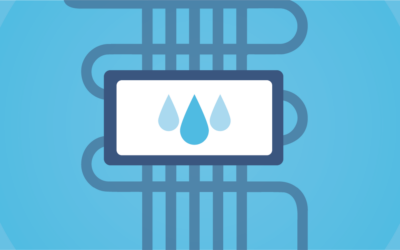In the realm of large-scale cooling systems, the variable primary chilled water system configuration emerges as a dynamic and efficient solution, offering a host of benefits for commercial buildings, industrial facilities, and beyond. This innovative configuration, which prioritizes flexibility and energy efficiency, revolves around the concept of eliminating the secondary chilled water loop, thereby streamlining the cooling process and optimizing performance.
Understanding the Basics of Variable Primary Systems
In a traditional chilled water system, separate primary and secondary pumping loops are used. The primary loop circulates a constant flow of water through the chillers, while the secondary loop varies flow to meet the building’s cooling demands. In contrast, a Variable Primary System eliminates the secondary loop, using a single set of pumps to directly vary the flow through both the chillers and the cooling coils in response to load changes. This allows the primary chilled water loop to directly serve all cooling loads throughout the building or facility. By removing the need for a secondary loop, this configuration reduces complexity, minimizes energy losses, and enhances system responsiveness to changing load conditions.
Key Components of Variable Primary Systems
The heart of a Variable Primary System is its ability to modulate chilled water flow based on real-time cooling demands. This is achieved through the following key components:
- Variable Speed Pumps: These adjust their speed to match the required flow, reducing energy consumption during periods of lower demand.
- Two-Way Control Valves: These valves regulate water flow based on the specific cooling needs of different zones. The key principle is that these 2-way valves either allow flow through the coil (when cooling is needed) or completely shut off flow (when no cooling is required). This is in contrast to 3-way valves used in constant flow systems, which divert flow rather than stopping it.
- Bypass Valve: The bypass valve is a critical component in variable primary chilled water systems. The primary function of the bypass valve is to ensure that the chillers always receive their minimum required flow rate, even when cooling demand is low, preventing freezing and maintaining system stability. The bypass valve is typically located near the end of the chilled water distribution loop, connecting the supply and return headers.
- Advanced Controls: Advanced control strategies can optimize system performance in real-time, balancing the operation of pumps, chillers, and cooling towers to maximize efficiency under varying conditions. This level of control also provides opportunities for more detailed energy monitoring and analysis, supporting ongoing optimization efforts.
Advantages of Variable Primary Systems
One of the most compelling advantages of variable primary systems is improved energy efficiency. By using variable-speed pumps, the system can precisely match the flow of chilled water to the building’s cooling load. This reduces the energy consumption of both the pumps and the chillers, leading to lower overall operating costs. According to the U.S. Department of Energy, variable primary systems can reduce pumping energy by 20-50% compared to traditional systems. This efficiency gain is particularly notable during part-load conditions, which are common in many facilities.
Variable Primary systems offer superior temperature control and system responsiveness with the ability to adapt to varying load demands with precision and efficiency. With the primary loop directly supplying chilled water to all loads, the system can adjust flow rates and temperatures in real-time to match the specific cooling requirements of each zone or piece of equipment. This dynamic response ensures optimal comfort levels while minimizing energy consumption and operating costs.
The simplified piping layout of Variable Primary systems leads to reduced capital costs and a smaller mechanical room footprint. With fewer pumps, pipes, and associated equipment, these systems are often less expensive to install and require less space, freeing up valuable real estate for other uses. Maintenance costs can also be lower due to the reduced number of components.
Another advantage is the potential for improved chiller efficiency. In a Variable Primary system, chillers can operate at lower condenser water temperatures during part-load conditions, improving their coefficient of performance. Additionally, the elimination of the primary-secondary temperature blend at the decoupler improves the overall system efficiency by maintaining a lower chilled water return temperature to the chillers.
Furthermore, the variable primary chilled water system configuration offers greater flexibility in system design and installation. Without the constraints imposed by a secondary loop, engineers and designers have more freedom to optimize piping layouts, select equipment sizes, and integrate innovative technologies such as variable speed pumps and advanced control systems.
Variable Primary Retrofits
Although the variable primary flow method can be an ideal solution for new chiller plants, the pumping technique can be difficult for retrofit projects, as it requires properly sized valves and controls as well as a building automation system (BAS) that is able to monitor the optimal pressure throughout the building. The setup of the controls system for variable primary flow system pumping systems is key to its success. If not configured properly, the variable-only pumps will provide little operational benefit for the building.
By embracing the efficiency and versatility of the Variable Primary chilled water system configuration, building owners, facility managers, and engineers can achieve significant improvements in energy performance, operational flexibility, and overall system reliability. With its ability to adapt to changing conditions and deliver precise cooling where and when it’s needed most, this configuration represents a forward-thinking approach to sustainable cooling solutions in today’s-built environment.





